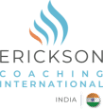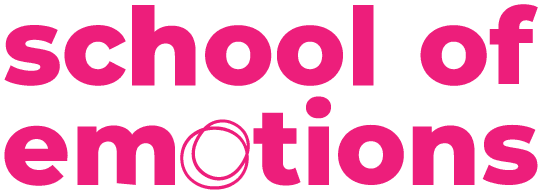Latest Leadership Statistics: The Covid Influence on Leadership
Author: Team xMonks | Published on: Mon, 28 Mar 2022 12:28:01 +0000
In the last two years, the face of leadership has altered, and what's more frightening is that scenarios in the future to come will represent a huge challenge for leaders all around the world. Leaders today are at the brink of what we thought might never come. What's more amusing is that the 'leadership challenge' is made even more difficult by the ambiguity that exists in this situation. Today's leaders are confronted with a plethora of 'leadership issues' and competing demands, the majority of which do not have a simple binary solution. It's critical to consider competing viewpoints, especially when both perspectives appear to be rational; it's almost like a game that can't be won. In a nutshell, the demands on leadership are unprecedented.
Latest Leadership Trends
To see how covid influenced leadership, we looked at Leadership Circle Profile (LCP) Reports from 2019, 2020, and 2021.
Profile analysis of 13,536 leaders from:
- 138 countries (32% from the United States)
- 61 industries
- 1,172 companies
Results from the analysis showed that:
- In the demographic breakdown, 43% were female and 57% were male.
- The breakdown according to the leadership level showed 11% belong to C-Suite, 4% were executive directors, 5% were general managers, 20% were directors, 27% were managers, 10% were officers, and 23% others.
Not only this but they performed an in-depth poll of leaders in the United States, asking them the following questions:
- How has managing during COVID influenced your leadership style?
- What has been the most valuable lesson you've learned about leadership as a result of managing during COVID?
- Based on your experience managing during COVID, what leadership advice would you give to others?
The following are the results they found:
- The COVID work setup impacted people in many ways. Many people felt isolated from coworkers after transitioning from an office setting to working from home. The change in the setting caused a huge impact and leaders felt the need for connection.
- Work became overburdening. Managing workloads was difficult due to continual emails, instant messaging, and conference calls (not to mention the demands of personal life). People lost work-life balance and constantly found the need to create a barrier between the two.
- During the new reality that they were facing, leaders were confronted with the yearning for more connection and organisation.
- The continual disruptions posed a significant challenge to lower-level management, making it more difficult to motivate their workers. Due to a lack of connection, it was discovered that leaders were more likely to strengthen their obeying tendencies, prompting them to either pull back and increase distance or assume entire control of the job.
- The loss of touch with direct reports was the most difficult challenge for senior managers. The rising expectations on leadership capabilities challenged all levels of management.
- During the peak of COVID in 2020, leaders were less focused on leadership assessment, but during the same time in 2021, there was a considerable increase in leadership assessment. This could be due to leaders realising that after dealing with something as serious as COVID, they require more knowledge about their own leadership.
- In the midst of COVID, the LCP data revealed an increase in creative leadership and a drop in reactive leadership, which contradicts the common story of leaders withering under the rigors of COVID.
Adapting, communicating, and modifying are crucial to long-term success and progress for leaders who have pushed into implementing creative leadership in a dynamic new world.
- Adaptability and flexibility were cited by 75% of leaders as critical to their success.
- Strong communication abilities were cited by 69% of leaders as a strength during these times.
- Composure, according to 50% of leaders, allows for a smooth transition.
Although we all know that adaptability, communication, and serenity are beneficial leadership qualities, successful leadership is a skill that can be learned and practiced. When they were asked what changes in leadership approach leaders aimed towards in the last two years, the responses varied depending on the managerial level. So different management levels focused on different leadership skill development.
Lessons Learnt From the COVID Influence on Leadership
What are the lessons that leaders are learning about themselves during this period? The following are the top three lessons acquired by leaders during COVID:
- To sustain engagement/relationships, according to 28% of leaders, you must be open to adjustments and accommodations.
- According to 25% of leaders, it is critical to engage with others calmly, listen to them, and treat them with care and respect.
- According to 18% of leaders, everyone's situation is different, and some people are more insecure than others. The ability to comprehend is crucial.
A few things that leaders have improved during the pandemic:
- As a result of leading during COVID, 97% of leaders said their leadership had improved.
- 60% of leaders have a stronger drive to develop their own leadership.
- Leaders have become nicer and softer to their coworkers in 24% of cases.
- The need for building stronger relationships was stressed by 45% of leaders.
- 33% of leaders improved their patience and became more forgiving of errors.
- 28% of leaders gave up control and allowed others to take part in decision-making and leadership.
We have no control over the underlying tendencies of the leadership deficit, but we do have control over how we respond to them. It's not enough to recognise and comprehend the enormity of the problem; we need to make this a high priority point and close the gap. However, this will necessitate organisational and systemic action, innovation, experimentation, and leaps of faith. Board members, top managers, and big funders must all commit to developing effective and long-lasting leadership teams within their organisations. Foundations, intermediaries, and associations must work together across the board to foster the flow and development of management talent.
To summarise, we must invest in leadership capacity, fine-tune management incentives to retain and attract elite personnel, and maintain psychological well-being and motivation.
Invest in leadership capacity: Leaders should invest in leadership capacity, both financially and in terms of time. Many effective corporate leaders devote more than half of their time to human resources issues. They feel that one of the most important resources is human talent and developing them is the most productive activity.
Refine management reward structures to retain and attract top employees: To fight the battle, leaders must face the complicated facts and better equip themselves to recognise and solve performance deficiencies, executive fatigue, and the need to retain and attract top employees.
Psychological well-being and motivation: Leadership's responsibility is to establish psychologically secure environments in which people may talk freely and bring their complete selves to work. Employees experienced record levels of stress and burnout during the pandemic, according to studies. It is critical to ensure the well-being of employees. Leaders need to make sure that the team is well motivated and at the same time, they have a secure environment to work.
Flexibility: The most important lessons learned through these times is the importance of remaining flexible, adapting as needed to changing circumstances, and actively engaging with others by asking questions and empathising with what they are going through. This might seem a little off, but in the long run, flexibility will bring adaptability in the employees and will inturn reduce the effects of adversity.
Leadership: A Brand
Everyone is familiar with the concept of a brand — product brands are everywhere. We purchase items with the Nike swoosh or the Polo horse and rider on them. We drive vehicles with distinct styling expressed in the brand and logos splashed on the hoods. Our laptops, notebooks, wallets, pens, and watches are all branded in order to send a message and stand out. Part of why we choose items is that their brand matches our own self-identity. Although product brands are all around us, the focus in the branding industry has steered away from things and toward the companies who manufacture or develop them. Today, the customer is more interested in the firm's reputation than in a specific product.
When leaders at all levels of an organisation exhibit a consistent reputation for both traits and results, they have developed a leadership brand. Thinking of leadership as a brand, rather than just something that leaders do, provides a variety of insights into leadership effectiveness and how to create long-term, consistent leadership that adds value to a company.
The world of tomorrow will present thorny challenges as we navigate through this period of public health crisis and the rising tides of globalisation. Sitting back is not an option now. What we can do best is to prepare for the worst and wait for something better to arrive. Be flexible, be a brand and keep motivating your employees. Leadership is going to be different now, so maybe this time, prepare to be a different leader for tomorrow.
Frequently Asked Questions
According to 28% of leaders, you must be open to adjustments and accommodations in order to maintain engagement/relationships. According to 25% of leaders, engaging with others calmly, listening to them, and treating them with care and respect is vital. Everyone's circumstance is different, according to 18 percent of leaders, and some people are more insecure than others. It is critical to have the ability to comprehend.
97 percent of leaders indicated their leadership has improved as a result of leading during COVID. Sixty percent of leaders are more motivated to develop their own leadership skills. In 24% of cases, leaders have grown friendlier and softer to their subordinates. 45 percent of leaders emphasized the need of developing stronger ties.
Leaders at all levels of an organisation have built a leadership brand when they have a consistent reputation for both attributes and results. Thinking of leadership as a brand, rather than merely something that leaders do, can provide a wealth of information about leadership effectiveness and how to build long-term, consistent leadership that adds value to a business.
Leaders should put money and time into developing their leadership skills. Human resource issues take up more than half of the time for many competent corporate CEOs. Human talent, they believe, is one of the most valuable resources, and that cultivating it is the most fruitful activity.
Results from the analysis of 13,536 leaders showed that:
- In the demographic breakdown, 43% were female and 57% were male.
- The breakdown according to the leadership level showed 11% belong to C-Suite, 4% were executive directors, 5% were general managers, 20% were directors, 27% were managers, 10% were officers, and 23% others.




.png)